What are 'leaky dams' and how do they stop floods?
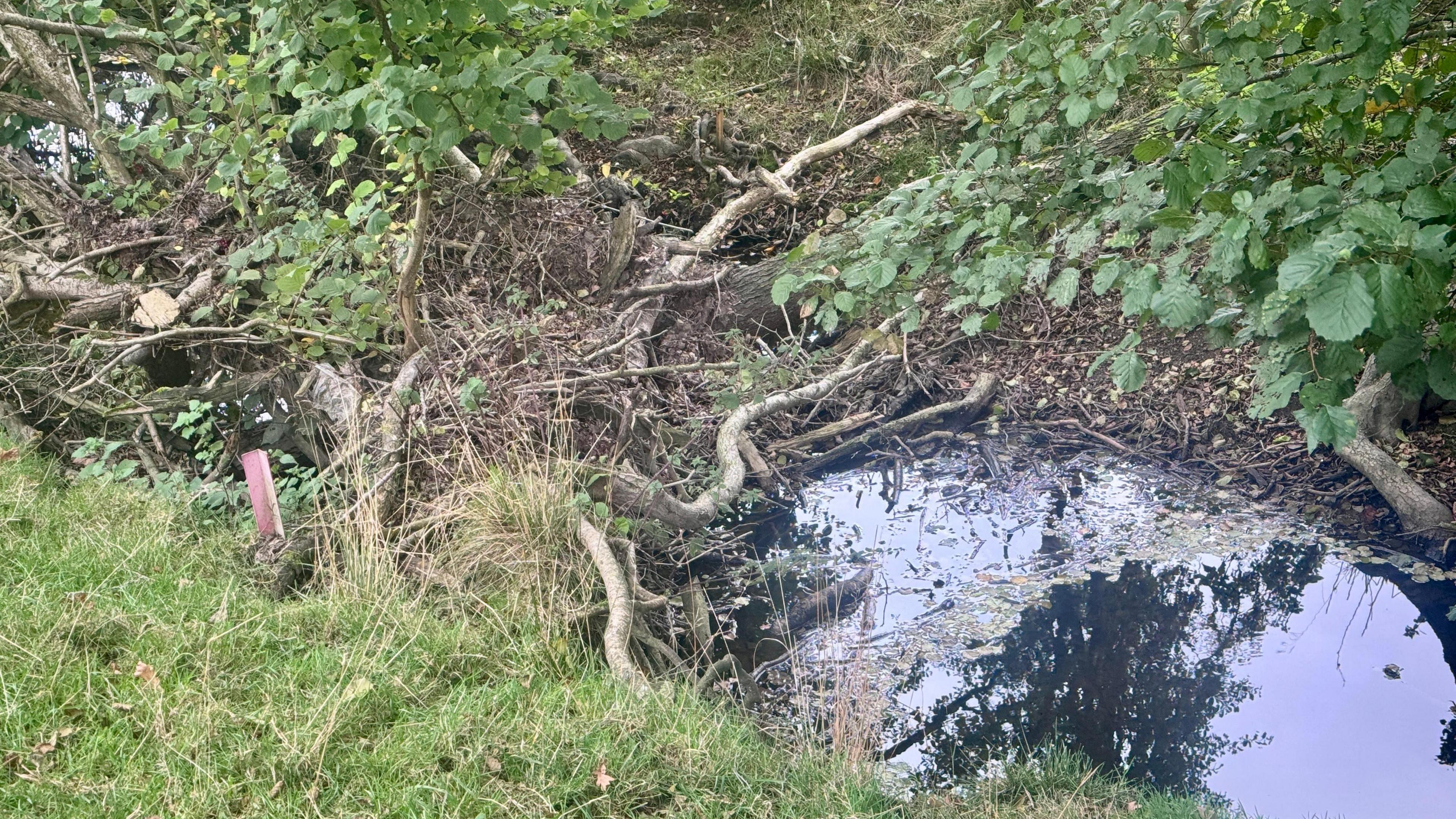
Man-made dams like this one in Shropshire could help to prevent floods in rivers downstream in Gloucestershire
- Published
As autumn gets under way and the rain starts coming down, communities across Gloucestershire are preparing for potential floods.
Rivers are being monitored, sandbags are being stacked up and natural flood defences are being created.
Shropshire Wildlife Trust has been making "leaky dams" to slow the flow of water downstream – this involves placing branches and twigs across small waterways – to try to reduce flooding in Gloucestershire.
All this work comes as the Environmental Audit Committee has called on the government to set up a national flood service for expert help and clear accountability.
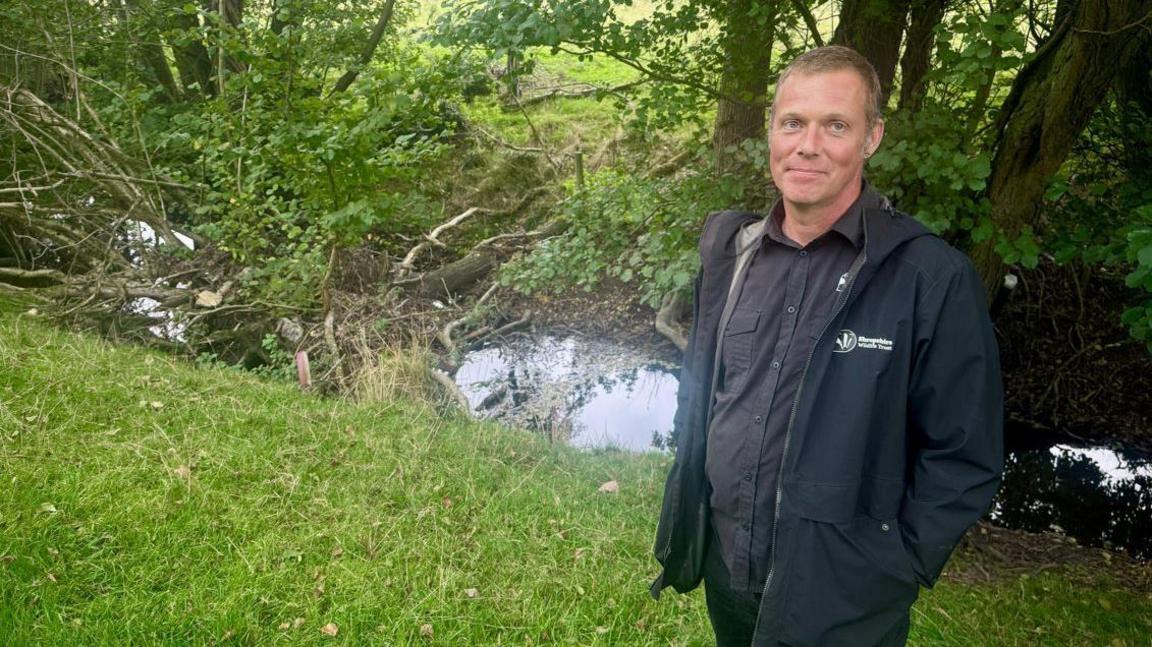
Luke Neal from Shropshire Wildlife Trust said natural dams can hold back significant amounts of water
Shropshire Wildlife Trust has been building the dams in the River Teme catchment area.
The river snakes through Shropshire and Worcestershire before joining the River Severn.
Scientists from Cardiff University have been monitoring the water flow in the Teme. They found an additional 100 cubic metres (3,531 cubic feet) of water is stored per dam.
This meant the dams slowly released 10 million litres of water (two million gallons) over the course of a week, preventing it from rushing downstream.
"We think that we can roll this out at such a large scale across really big catchments that we can begin to impact and reduce flooding in places like Worcester and Gloucester," said Luke Neal, from the trust.
The dams are also being created in Gloucestershire – for example, in Newent and Cannop in the Forest of Dean, Uley near Stroud, and Abbeymead in Gloucester.
Gloucestershire County Council is working on a new catchment prioritisation exercise to work out which areas need more natural flood barriers.
For those on the front line of flooding, the impact can be devastating.
Caroline Price's home was flood in January 2024. She had to live in temporary accommodation for more than six months while repairs took place.
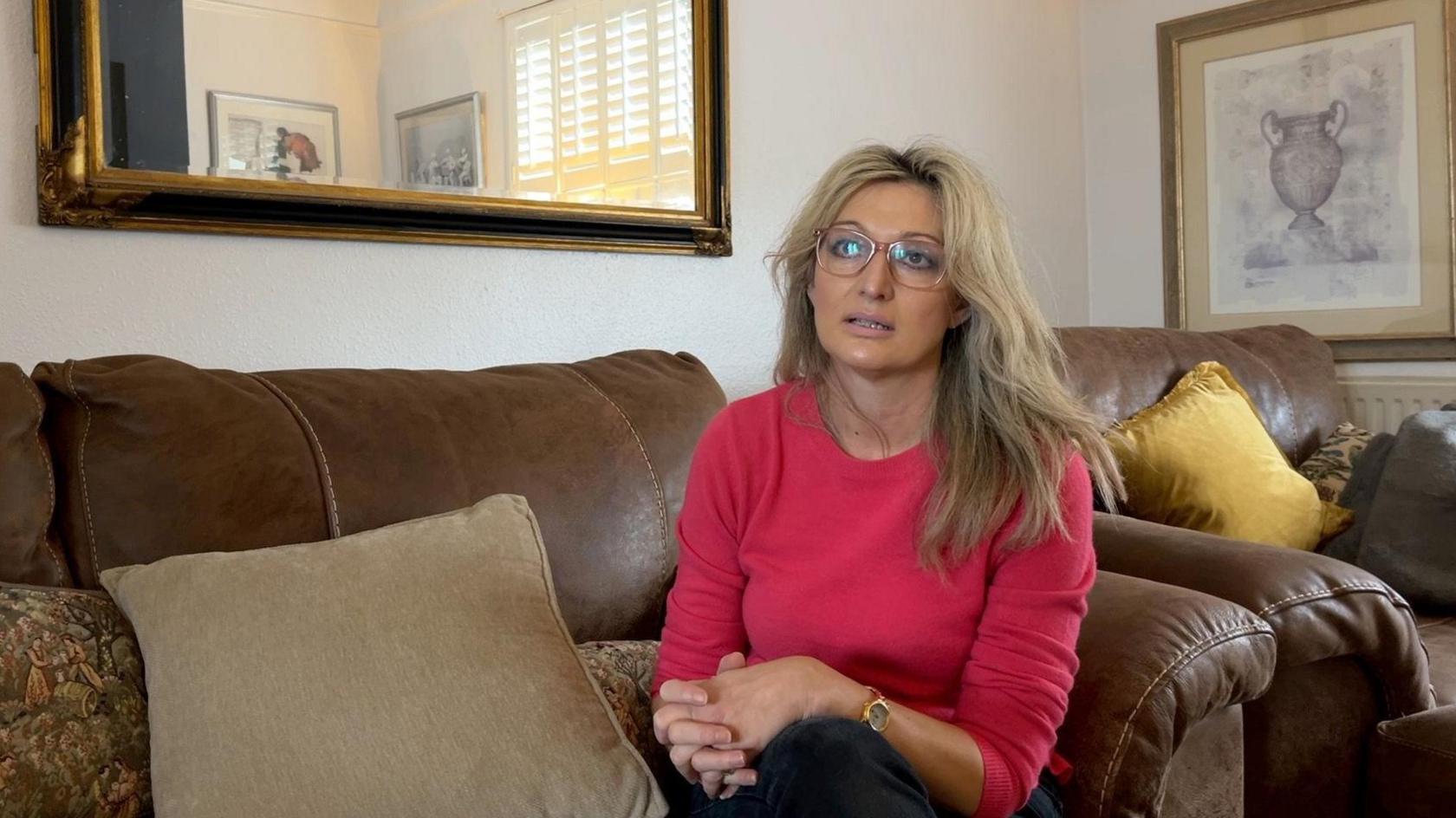
Caroline Price's home in Tewkesbury was flooded in January 2024
"There's nothing you can do to stop it and within 12 hours it [the water] was a foot up," Mrs Price said.
She added: "Looking back on it now, the devastation was pretty dramatic."
Despite the upheaval, like many in Tewkesbury, Ms Price believes flooding is a risk that has to be accepted when living so close to two major rivers – the Severn and the Avon.
"Floods happen in Tewkesbury, they're always going to happen, they always have happened, you take a view on that and you kind of have to live with it to a certain extent," she said.
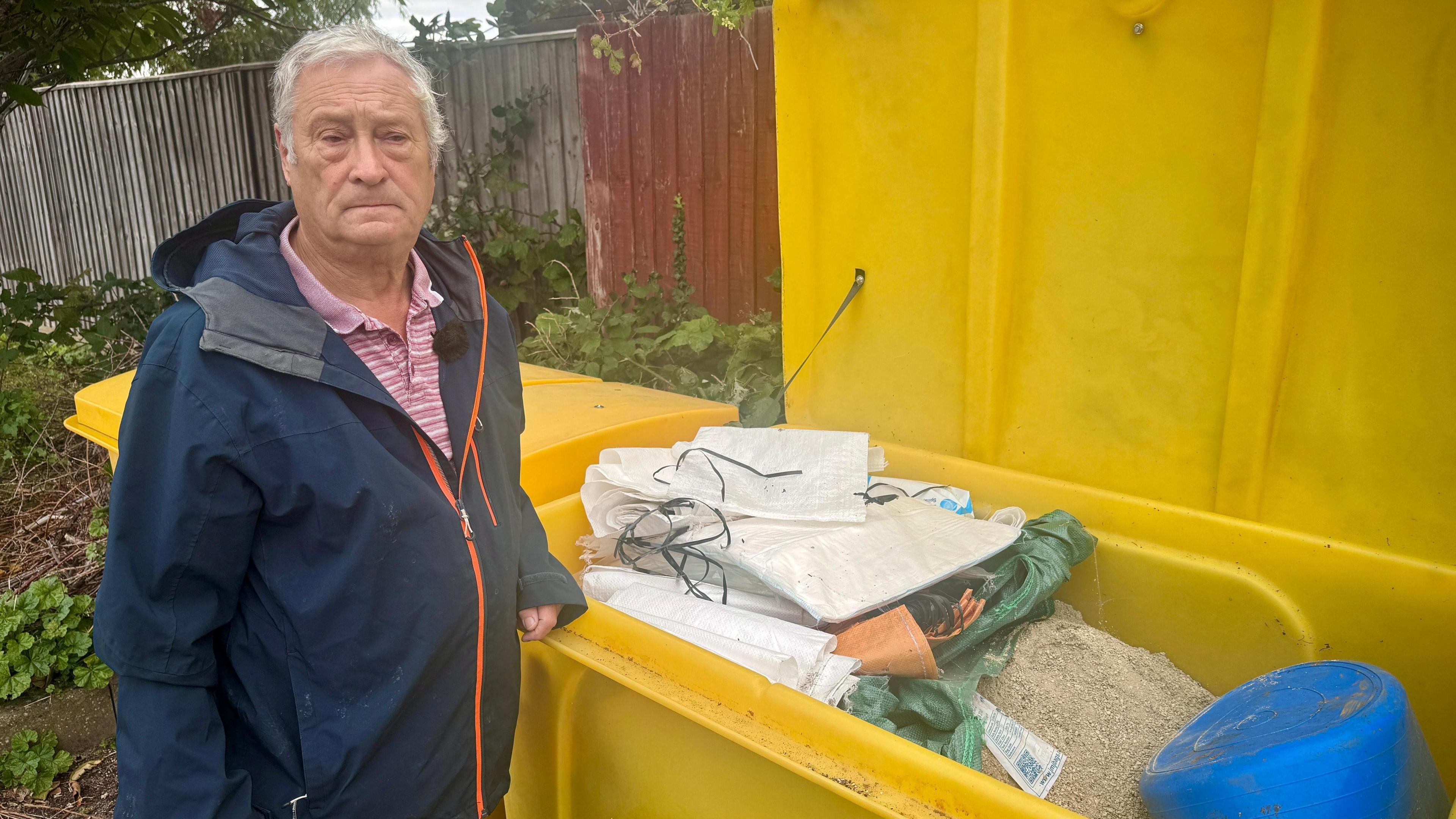
Flood wardens like Christopher Byers are monitoring river levels
As prevention work to determine the best places to slow the pace of the river is under way, flood wardens and parish councillors are keeping an eye on river levels.
If there is a surge, an alert will be sent out to the wardens, who will then warn those likely to be affected.
Christopher Byers is a flood warden in the village of Longford – which was hit badly by flooding in January 2024 – and is vice chair of Longford Parish Council.
"We have around 600 empty sand bags and around two metres cubed of grit, all in storage ready to use," he said.
Longford and the surrounding areas have seen a lot of development in recent years which Mr Byers feels has changed the way the flooding happens and puts pressure on the system.
'Lack of accountability'
Earlier this month, the Environmental Audit Committee, which scrutinises government work, produced a report looking at flood resilience in England.
It found many communities still do not know who is responsible for managing flood risk where they live and there is no single line of accountability, which undermines trust, delays response and obstructs long term planning.
It named unchecked development as one of the reasons for flooding, along with changing weather patterns driven by climate change, and ageing infrastructure.
The Department for Environment, Food & Rural Affairs said it was investing more than £10.5bn in new flood defences but would consider the committee's recommendations.
"This government inherited defences in the worst condition on record and has immediately put money into maintenance and repairs as well as delivering 151 flood schemes, safeguarding more than 24,000 properties," a government spokesperson said.
But the spokesperson said "more action is needed" and added officials are looking at "a simpler and transparent approach" to make it easier to build defences.
Get in touch
Tell us which stories we should cover in Gloucestershire
Follow BBC Gloucestershire on Facebook, external, X, external and Instagram, external. Send your story ideas to us on email or via WhatsApp on 0800 313 4630.
Related topics
- Published23 September

- Published6 July
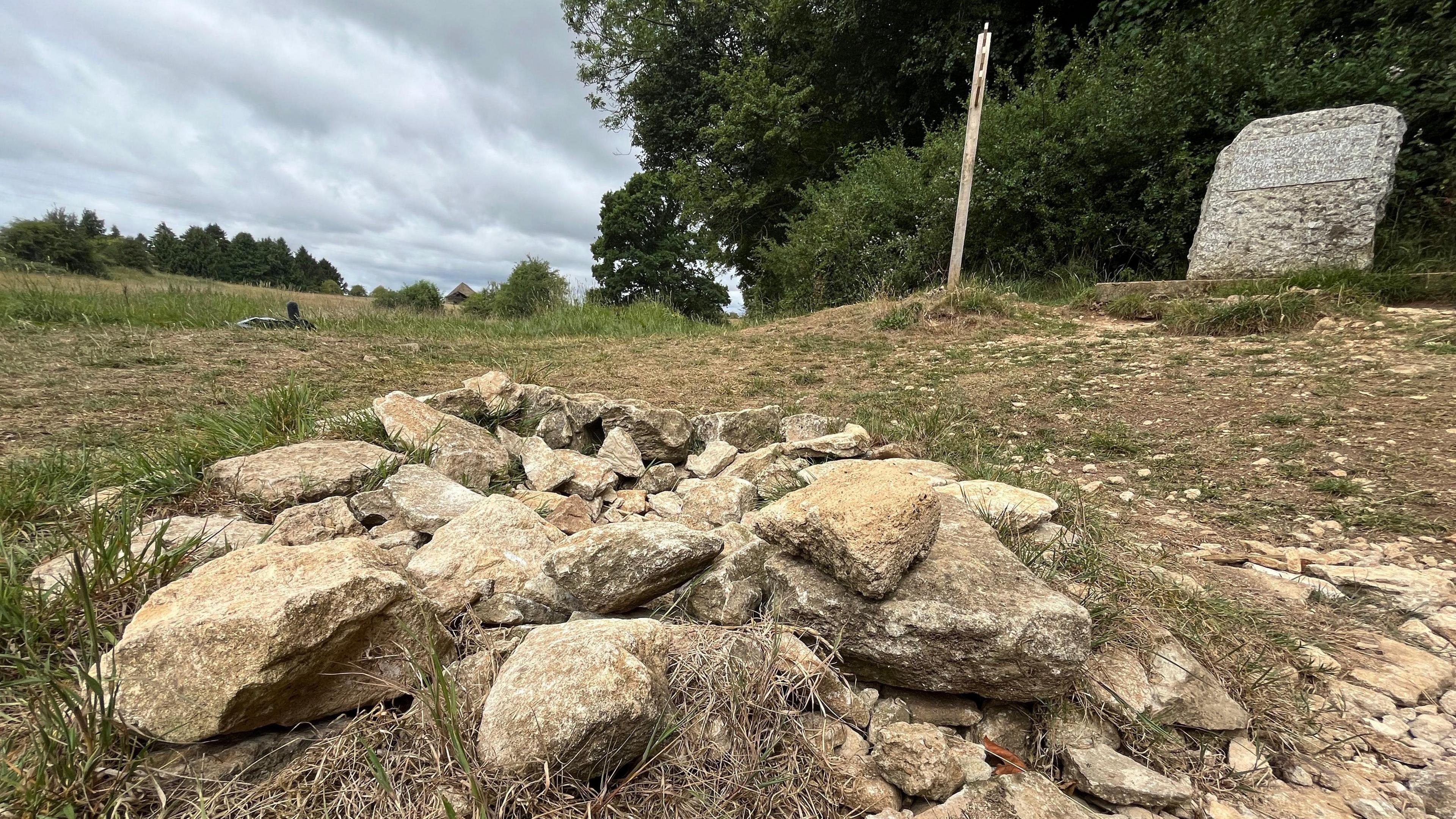
- Published14 October
